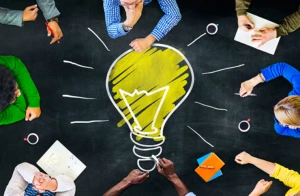
13 Haunting Customer Service Statistics
It’s frightening how much expectations for customer service have grown over the past few years. With more and more technology at their fingertips (and more amazing consumer experiences being presented each day), customers are looking for service and support so personalized, proactive and predictive that it’s downright scary.
But behind the scenes, many customer service agents are still having to work with a Frankencloud of siloed technologies that doesn’t give them the information or the means to impress – or sometimes even satisfy – the customer.
Here are 13 haunting (and daunting) customer service statistics that are keeping brands, and especially CSRs, up at night:
1. As brand differentiation becomes more difficult to achieve through price or product, 97% of global consumers say customer service is important in their choice of, and loyalty to, a brand. – 2016 Microsoft State of Global Customer Service Report
2. 56% of global consumers say they have higher expectations for customer service now than they had just one year ago. This number jumps to 68% for 18 – 34-year-olds. – 2016 Microsoft State of Global Customer Service Report
3. 60% of global consumers have stopped doing business with a brand due to a single poor customer service experience. – 2016 Microsoft State of Global Customer Service Report
4. 72% of customers now expect a customer service agent to know their contact information, product information and service history as soon as they engage and without being asked. – 2016 Microsoft State of Global Customer Service Report
5. 79% of surveyed global contact centers say they have no big picture view of a customers’ interactions across service channels. – 2016 Dimension Data Global Contact Centre Benchmarking Report
6. 48% of global consumers don’t believe most brands take action on customer feedback. – 2016 Microsoft State of Global Customer Service Report
7. Customers say the two most important aspects of a satisfying customer service experience are (1) not having to repeat myself or be passed to another agent (39%), and (2) first contact resolution (24%). – 2016 Microsoft State of Global Customer Service Report
8. Almost half (44%) of global customers feel that it takes them more effort than the brand to resolve their customer service issue or question. (In the U.S., it rises to 65%; in the UK, 72%.) – 2016 Microsoft State of Global Customer Service Report
9. 77% of global consumers have a more favorable view of a brand that offers proactive customer service alerts and notifications. – 2016 Microsoft State of Global Customer Service Report
10. Almost half (47%) of consumers ages 18 – 34 have used social media to complain about a brand’s customer service (compared to just 29% overall and 12% of consumers ages 55+). – 2016 Microsoft State of Global Customer Service Report
11. 67% of global consumers across all age groups expect brands to respond within 24 hours to their customer service questions, complaints or praise on social media. – 2016 Microsoft State of Global Customer Service Report
12. In addition to human customers, by 2018, six billion “things” (as in the Internet of Things) will have the ability to request support. – Gartner Predicts 2016: CRM Customer Service and Support
13. The 2016 Dimension Data Global Contact Centre Benchmarking Report shows that contact centers’ top four technology challenges are (1) integrating multiple systems, (2) legacy systems inhibiting flexibility, (3) pressure on resources and (4) budget burdens.
But according to the Economist Intelligence Unit Creating a Seamless Customer Experience Report, 45% of consumers say a lack of interest in customer satisfaction is the biggest obstacle preventing companies from providing the ideal customer experience. Only 14% of consumers believe it’s inadequate technology.
—————–
Sleep Better at Night: Learn More
 To learn more about taming the savage beast that is the Frankencloud, click here to learn more about Microsoft Dynamics 365, Microsoft’s next generation of intelligent business applications that applications unify CRM and ERP capabilities by delivering new purpose-built applications (including customer service) that work seamlessly together.
To learn more about taming the savage beast that is the Frankencloud, click here to learn more about Microsoft Dynamics 365, Microsoft’s next generation of intelligent business applications that applications unify CRM and ERP capabilities by delivering new purpose-built applications (including customer service) that work seamlessly together.
To access the full Microsoft 2016 State of Global Customer Service Report, which surveyed 5,000 consumers across Brazil, Germany, Japan, the United Kingdom and the United States on their customer service expectations and preferences, click here.

